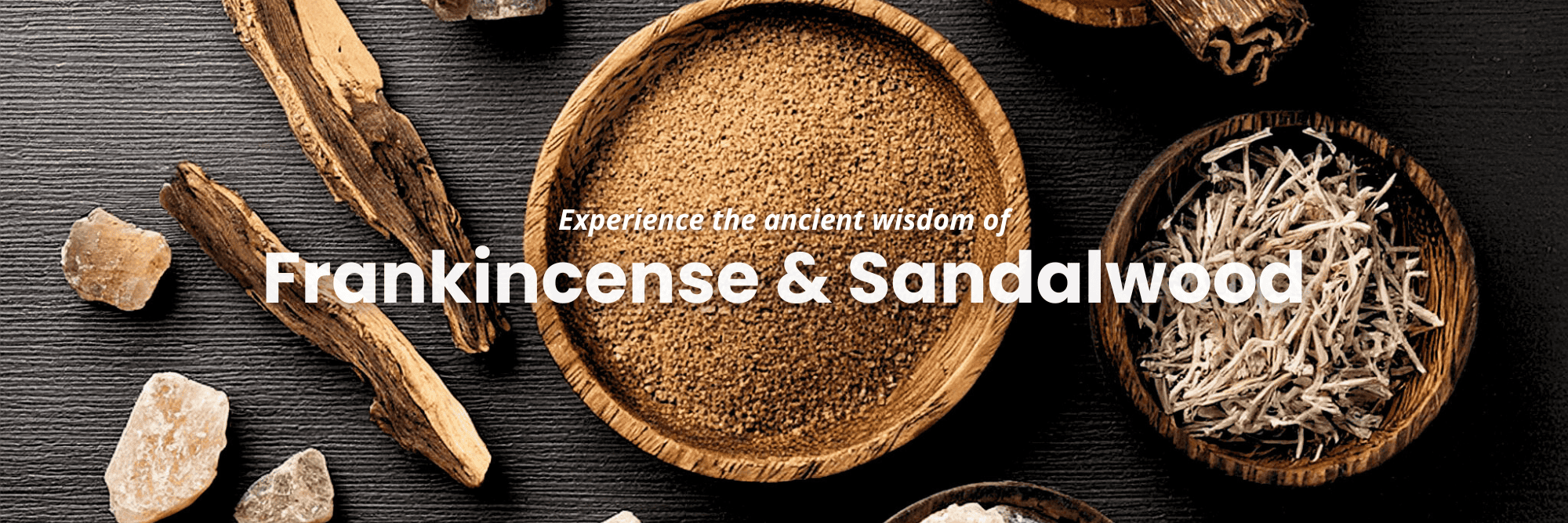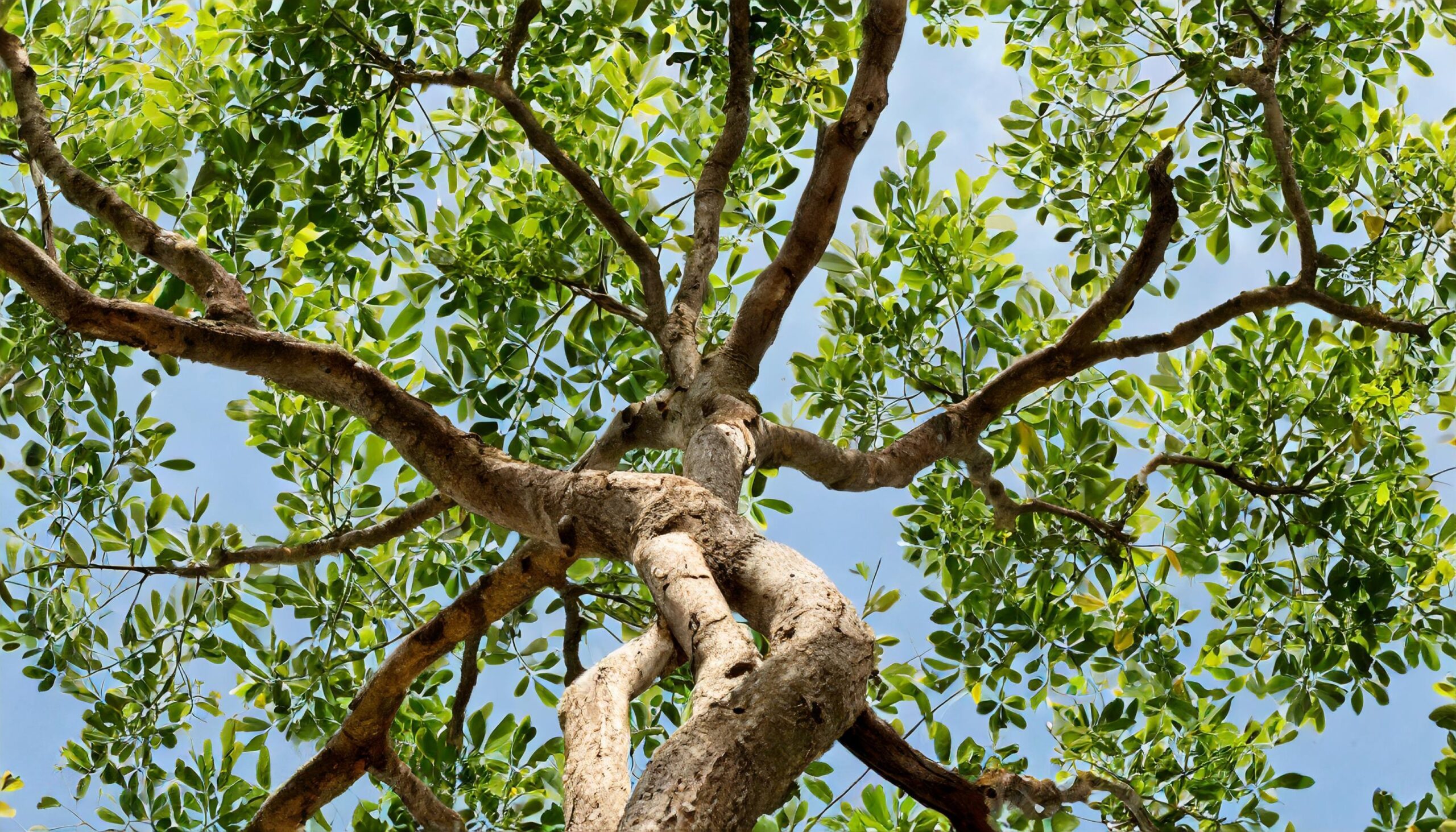Frankincense and Sandalwood

Meditation, Stillness and Tranquil Contemplation
Sandalwood and Frankincense are both steeped in the history of the ancient world. There is a long history of Sandalwood in the cultures of India and Egypt. The wood of this precious tree was carved into furniture, used in temples and religious icons and was burned as an incense in both Buddhist and Hindu temples. As a funeral herb, it was used to anoint and embalm the dead and to carry the soul into the next life. The spread of the use of this oil followed the spread of Buddhism. The use of powdered sandalwood as an incense is an example of how sandalwood has always been considered the aromatic foundation of Buddhist practice.

Frankincense, the oil of tranquil contemplation and spiritual liberation, is known to us all as one of the most precious gifts from the three wise men to Jesus Christ. It is mentioned 22 times in the bible and today it remains as one of the four main ingredients that make up Jewish ceremonial incense and for centuries formed an integral part of the Sabbath day offering, it still is used in many churches today.

Frankincense
Frankincense, Boswellia Carterii, was originally found only in the harshest climate in the world, the Arabian Desert. Accessed only by desert caravans, it was a most precious gift, considered at that time to be as precious as gold. Now it is grown in the surrounding areas of Somalia, Ethiopia, Southern Arabia and China. To access the oils incisions are made into the trunk in order to allow a milky-white oleoresin to be collected. The resin then hardens into an orange-brown gum, which is then steam distilled for its essential oils. There are many grades of resin, the age, appearance, moisture level and olfactory characteristics determine the quality of the oil. Grade 1 essential oil is distilled from the ‘tears’ and is most carefully selected from the resin that is white or yellow in color. Other resins may be reddish in color and mixed with particles of bark and other foreign substances, and therefore are sold as a cheaper essential oil.

Frankincense tears
Today sandalwood has become a ‘precious’ oil. Closely controlled by the government of East India, the oil is manufactured from the coarsely ground heartwood. Native to Southern Asia, most of the world’s Santalum Album is grown in the Mysore region of India. The Indian standard for Mysore sandalwood is an oil that contains a minimum of 90% sotalol’s…
We are not able to obtain the oils from the tree until it is 30 years old and as a result over time, demand has out stripped the production of this sweet, woody, balsamic oil. The price has risen dramatically and has also stimulated the production of ‘artificial’ oils, so good, that only a seasoned aromatherapist or correct testing would reveal its true chemistry. When you purchase sandalwood, the real oil will now cost about $80 for 5mls.
Mind and Spirit
Frankincense and Sandalwood have the ability to calm and center the mind, they are gently tranquillizing and have a deeply clarifying effect on the Intellect. On a day to day level, these oils are suggested for states of mental agitation and worry, or whenever the mind is distracted and overwhelmed.

Sandalwood
The yogis describe Sandalwood oil as the fragrance of the ‘subtle body’, the center of the highest insight and enlightenment. Sandalwood exerts a considerable regulating effect and generally can be said to harmonize thinking, feeling and sensing. It brings to each of us a sense of calming, centering and grounding, leaving us living fully in the present moment. Consider this oil for depression, nervous tension, restlessness, anxiety, guilt, and a feeling of insecurity.
As a mild tonic, Frankincense can help uplift the mind and is also an important anti-depressive essential oil. Like sandalwood oil, it is an ideal aid to meditation, contemplation and prayer, ceasing mental chatter and stilling the mind. Mojay describes the action of frankincense as:

“Facilitating a single pointed concentration, it allows the spirit to soar” – Gabriel Mojay
Frankincense is also particularly useful for anxious and obsessional states linked to the past. In the same way that Frankincense heals the physical wounds of the body so it heals the emotional wounds, especially grief.
“Whenever we have allowed ourselves to become oppressed by the mundane or tied to the past-indeed restricted or weighed down by any form of over attachment- frankincense can help us break free. This it will achieve through encouraging tranquility, insight and in spiritual discipline, allowing the ego-self and transpersonal self to work in unison” – Mojay
Skin

It is a common theory that if we look at how or why a plant produces essential oils we can translate that into its potential properties for therapeutic use. Therefore in the case of Frankincense, because the tree is wounded as the bark is slashed and then using the natural resin that it produces to immediately heal itself and close the wound, it is considered one of the best essential oils to renew human damaged cells and skin tissues. Having cytoplastic properties, it makes the perfect oil for mature, wrinkled skin in need of a lift, consider it for scar and wound healing and as a mild astringent it can help to balance sebaceous flow.
Sandalwood is also a great healer of the skin. In Ayurvedic (traditional Indian) medicine, sandalwood was valued for its anti-inflammatory, antifebrile and anti-infectious properties and was frequently applied as a paste for inflamed skin. It is an excellent oil for the esthetician to use in skin care. The strength of the essential oil is as an emollient in the treatment of dryness and dehydration, itching, irritation and inflammation and is helpful for eczema, dermatitis and psoriasis. Include it in treatments for dry mature skin, rosacea and the many sensitive skins that seem to be present today. Try a drop or two in a mask or put a couple of drops in an appropriate cold pressed carrier oil to use in a gentle facial massage.
Body

Like most other oils extracted from resins, Frankincense is effective for respiratory catarrhal discharge and respiratory congestion. Used in inhalations, it may be helpful for asthma sufferers as it eases the shortness of breath and increases the amplitude of the breath Frankincense has an important action is the nervous system. It slows the breathing and creates the ability to relax and yet revitalize, making it excellent for treating both nervous tension and nervous exhaustion. It smooths the flow of stagnant Qi energy whenever there is an accumulation of stress leading to irritability, restlessness and insomnia.
Sandalwood also effective in lung disorders and lung infection, and is particularly effective when a soothing, demulcent effect is required as in cases of bronchitis involving a “thick’ harsh and painful cough. In such a situation, Sandalwood may be combined with oils of Eucalyptus and Geranium and in very low dilutions it may also be employed as a gargle for sore throats.
The astringent properties of Frankincense may assist in relieving uterine hemorrhages as well as heavy periods and generally acts as a tonic to the uterus. Similarly the primary action of Sandalwood is centered on the genito-urinary system. It is outstanding for intestinal and genito-urinary conditions that require a cooling, astringent effect as in cases of “burning” diarrhea, colitis and vaginal discharge of a yellowish color. It can also be combined with Lavender, Tea Tree and Geranium oil as part of an ointment for hot, burning cystitis.
Enjoy the calming nature of these two spectacular oils by using them in your daily life and also give this gift to your clients when they are need of help in their lives. Blend 3 drops of Frankincense with 3 drops of Sandalwood and two drops of Lavender in 15 grams of unscented cream and apply to the chest area to help you through a difficult day.

Written By Trish Green DiHom(Pract) B.Ed Cidesco Diplomat. Bach Flower Therapist.
Trish is a graduate of the Victoria University of Manchester, Trish is a teacher with 35 years of experience in the education field. For twenty of those years she has been an educator in the esthetics industry. She is an advocate for raising standards in education for Complementary Health Care Practitioners with special interest in Aromatherapy. Her career in the field of natural health and esthetics is wide and varied. From Doctor of Homeopathy to Cidesco diplomat, Trish is a dedicated professional, committed to ongoing education and the education of others.
